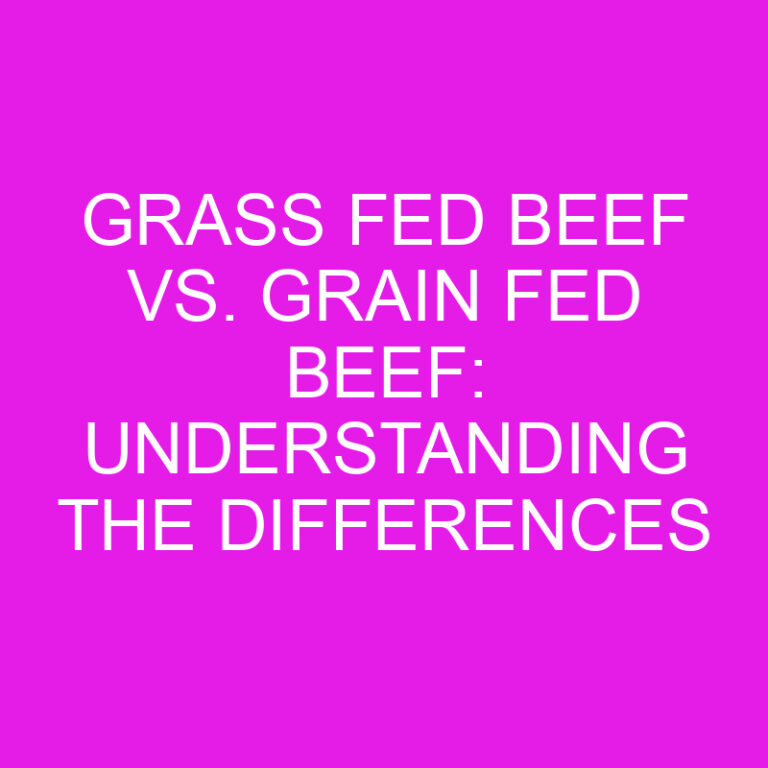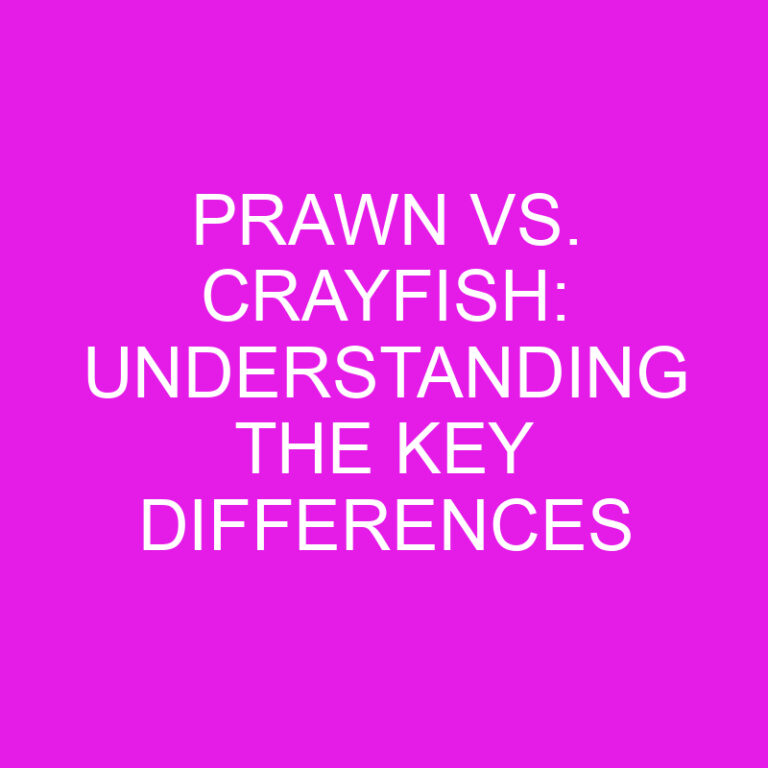
Post Contents
- What are White Onions?
- What are Yellow Onions?
- Appearance and Taste Differences
- Culinary Uses
- Nutritional Differences
- Conclusion
- Frequently Asked Questions
- Q: What is the difference between white onions and yellow onions?
- Q: How should I use white onions and yellow onions in cooking?
- Q: Do yellow onions and white onions have different flavors when cooked?
- Q: Can I pickle white onions and yellow onions?
- Q: Are there any nutritional differences between white onions and yellow onions?
- Q: Which type of onion should I choose?
What are White Onions?
White onions are a popular variety of onion that are widely used in cooking and have a distinct taste and flavor. As an expert blogger, I’ll explain what makes white onions unique and how they differ from yellow onions.
- Appearance: One of the most noticeable differences between white onions and yellow onions is their appearance. White onions have a pale white skin and flesh, which sets them apart from the golden yellow color of yellow onions.
- Taste: When it comes to taste, white onions have a milder flavor compared to yellow onions. They are less pungent and have a slightly sweeter taste. This makes white onions a great choice for dishes where you don’t want the onion flavor to overpower other ingredients.
- Texture: White onions have a firm and crisp texture, which makes them ideal for adding a crunchy element to salads or sandwiches. Their texture also holds up well when cooked, giving dishes a pleasant bite.
- Culinary uses: White onions are versatile and can be used in a variety of dishes. They are commonly used in Mexican cuisine, where their mild flavor and crunchy texture complement the flavors of spicy salsas and sauces. White onions are also perfect for pickling and can be thinly sliced and added to sandwiches or wraps for an extra layer of flavor and crunch.
- Nutritional value: Like yellow onions, white onions are a good source of vitamins C and B6, potassium, and dietary fiber. They also contain antioxidants that may help promote overall health and protect against certain diseases.
White onions are milder in flavor and have a distinct appearance compared to yellow onions. They are versatile in the kitchen and can be a great addition to a variety of dishes. Incorporating white onions into your cooking can add a touch of freshness and crunch to your meals.
Stay tuned for the next section, where I’ll delve into the world of yellow onions and uncover what sets them apart.
What are Yellow Onions?
Yellow onions, also known as brown onions, are one of the most commonly used types of onions in cooking. They have a characteristic yellowish-brown skin and a strong, pungent flavor. Yellow onions are widely available and can be found in grocery stores all year round.
Yellow onions are known for their versatility in the kitchen. They are often used as a base ingredient in many recipes, including soups, stews, and sauces. The strong flavor of yellow onions adds depth and richness to dishes, making them a staple in various cuisines worldwide.
One notable difference between yellow onions and white onions is their flavor profile. While white onions have a milder taste, yellow onions are more pronounced and robust. The strong flavor of yellow onions can sometimes be overpowering when eaten raw, but it mellows down and becomes sweeter when cooked. This makes them ideal for caramelizing and sautéing, as the sweetness intensifies and complements other ingredients.
In terms of texture, yellow onions are slightly softer compared to white onions. They have a higher water content, which contributes to their juiciness when cooked. The outer layers of yellow onions are also thicker, providing protection and reducing the likelihood of bruising.
Yellow onions are not only delicious but also offer various health benefits. They are a rich source of vitamins C and B6, as well as dietary fiber. These nutrients play a crucial role in supporting a healthy immune system and promoting digestive health.
Yellow onions are widely used in cooking due to their strong flavor and versatility. They are known for their yellowish-brown skin, robust taste, and slightly softer texture compared to white onions. Yellow onions are an excellent addition to savory dishes and offer essential vitamins and dietary fiber. Their distinct characteristics make them a favorite among chefs and home cooks alike.
Appearance and Taste Differences
When it comes to appearance, white onions and yellow onions have distinct characteristics. Yellow onions, also known as brown onions, have a yellowish-brown skin, while white onions have a white or off-white papery skin. This variation in color makes it easy to differentiate between the two types.
In terms of taste, yellow onions have a strong, pungent flavor that is more pronounced and robust than that of white onions. This makes them ideal for adding a bold flavor to dishes. On the other hand, white onions have a milder and sweeter taste compared to yellow onions. Their flavor is less overpowering, which makes them suitable for recipes that require a more subtle taste profile.
It’s worth noting that the difference in taste between white onions and yellow onions becomes more apparent when they are cooked. Yellow onions retain their strong flavor even after cooking, which makes them perfect for caramelizing and sautéing. The heat brings out their natural sweetness, making them a delicious addition to many dishes. White onions, on the other hand, have a tendency to become sweeter and lose some of their mildness when cooked. This makes them great for adding a subtle touch to recipes without overpowering other ingredients.
Overall, the appearance and taste differences between white onions and yellow onions provide culinary enthusiasts with a variety of options to choose from. Whether you’re looking for a bold and robust flavor or a milder and sweeter taste, both types of onions have their own unique qualities that can enhance your recipes.
Now that we’ve explored the appearance and taste differences between white onions and yellow onions, let’s delve into their culinary uses.
Culinary Uses
When it comes to cooking, both white onions and yellow onions have their own unique uses and flavors. Let’s explore how these two types of onions can be used in various culinary dishes:
- Raw Usage: White onions are often preferred for eating raw or adding to fresh salads. Their milder flavor allows them to add a subtle onion taste without overpowering the other ingredients. You can slice white onions thinly and use them in sandwiches, wraps, or as a topping for tacos and burgers. Yellow onions, with their strong and pungent flavor, are perfect for adding a punch to salsas, chutneys, or relishes.
- Cooked Dishes: When it comes to savory cooked dishes, yellow onions are the go-to choice for most chefs. Their strong flavor and ability to hold up well during cooking make them ideal for soups, stews, and braised dishes. The flavor of yellow onions intensifies when you cook them, adding a rich depth to your recipes. On the other hand, white onions are great for milder flavored dishes or when you want a subtle onion taste without overpowering the other flavors. They work well in stir-fries, quiches, and omelets.
- Caramelization: Yellow onions shine when it comes to caramelizing. The natural sugars in yellow onions caramelize beautifully, giving them a sweet and rich flavor. They are perfect for making French onion soup, onion marmalade, or adding depth to sauces and gravies. While white onions can also be caramelized, their milder flavor doesn’t develop the same level of sweetness.
- Pickling: Both white and yellow onions can be pickled, but the choice often depends on personal preference. White onions, with their milder taste, lend themselves well to pickling as they absorb the flavors of the pickling solution without overpowering it. Yellow onions add a bolder and more pronounced onion flavor to pickles, giving them a zesty kick.
White and yellow onions have their own distinct flavors that can elevate a variety of dishes. Whether you prefer the milder sweetness of white onions or the robust pungency of yellow onions, both varieties have their place in the kitchen. Experiment with both to discover the perfect onion to complement your favorite recipes.
Nutritional Differences
When comparing white onions and yellow onions, it’s important to consider their nutritional profiles. While white onions and yellow onions share similar health benefits, there are some differences in their nutrient content.
Both white onions and yellow onions are low in calories and fat, making them a great choice for those trying to watch their weight. They are also rich in essential nutrients such as vitamin C, vitamin B6, and dietary fiber. However, there are a few key differences to note.
One significant difference is their antioxidant levels. White onions tend to have a higher concentration of certain antioxidants, such as flavonoids, than yellow onions. These antioxidants have been linked to various health benefits, including reducing the risk of heart disease and certain types of cancer. So, if you’re looking to boost your antioxidant intake, opting for white onions might be a good choice.
On the other hand, yellow onions contain higher amounts of sulfur compounds compared to white onions. These sulfur compounds are responsible for the pungent odor and flavor of onions. They also have potential health benefits, such as antimicrobial properties and anti-inflammatory effects. Additionally, yellow onions are a good source of quercetin, a flavonoid that has been shown to have anti-inflammatory and anti-cancer properties.
In terms of vitamin and mineral content, both white onions and yellow onions provide essential nutrients. Here’s a quick comparison:
| Nutrient | White Onion | Yellow Onion |
|---|---|---|
| Vitamin C | Good source | Good source |
| Vitamin B6 | Good source | Excellent source |
| Fiber | Good source | Good source |
| Potassium | Good source | Good source |
| Folate | Good source | Good source |
As you can see, both white onions and yellow onions offer a range of vitamins and minerals that contribute to a healthy diet. The choice between the two ultimately depends on your personal preference and the specific health benefits you’re looking to obtain.
By understanding the nutritional differences between white onions and yellow onions, you can make an informed choice when adding them to your meals. Enjoy the diverse flavors and health benefits these versatile vegetables provide.
Conclusion
White onions and yellow onions have distinct differences in terms of taste, appearance, and culinary uses. White onions are known for their milder, sweeter taste, making them a popular choice for raw consumption and adding to salads. On the other hand, yellow onions offer a stronger, pungent flavor that adds a punch to salsas, chutneys, and relishes. When cooked, yellow onions retain their robust taste, while white onions become even sweeter. Yellow onions are commonly used in soups, stews, and braised dishes, while white onions are preferred for milder-flavored recipes. Both types of onions can be pickled, with white onions providing a milder taste and yellow onions imparting a bolder flavor to pickles. In terms of nutrition, white onions have higher concentrations of certain antioxidants, while yellow onions contain more sulfur compounds and are a good source of quercetin. Ultimately, the choice between white onions and yellow onions depends on personal preference and the desired health benefits.
Frequently Asked Questions
Q: What is the difference between white onions and yellow onions?
White onions have a milder, sweeter taste, while yellow onions have a stronger, pungent flavor.
Q: How should I use white onions and yellow onions in cooking?
White onions are often preferred raw or in fresh salads, while yellow onions are ideal for salsas, chutneys, or relishes. Yellow onions are commonly used in soups, stews, and braised dishes.
Q: Do yellow onions and white onions have different flavors when cooked?
Yes, yellow onions retain their strong flavor when cooked, while white onions become sweeter.
Q: Can I pickle white onions and yellow onions?
Both types of onions can be pickled, with white onions having a milder taste and yellow onions providing a bolder flavor to pickles.
Q: Are there any nutritional differences between white onions and yellow onions?
Yes, white onions have a higher concentration of antioxidants, while yellow onions contain higher amounts of sulfur compounds and are a good source of quercetin. Both types of onions provide essential nutrients such as vitamin C, vitamin B6, and dietary fiber.
Q: Which type of onion should I choose?
The choice between white onions and yellow onions ultimately depends on personal preference and the specific health benefits desired.






